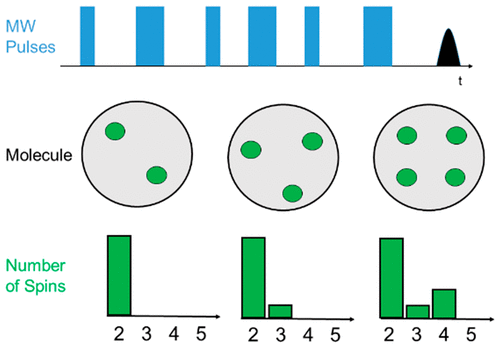The paper of NIOCh's researchers (with the international collaboration) is published in the journal The Journal of Physical Chemistry Letters (IF=6,71)
Multiquantum Counting of Trityl Radicals
Matthias Bretschneider, Phillip E. Spindler, Olga Yu. Rogozhnikova, Dmitry V. Trukhin, Burkhard Endeward, Andrey A. Kuzhelev, Elena Bagryanskaya, Victor M. Tormyshev, and Thomas F. PrisnerJ. Phys. Chem. Lett. 2020, 11, 15, 6286–6290
Publication Date:July 15, 2020
https://doi.org/10.1021/acs.jpclett.0c01615

Abstract
We demonstrate a series of multitrityl radical compounds where accurate spin-counting by pulsed electron paramagnetic resonance (EPR) can be achieved at X-band (9 GHz) frequencies, even for molecules with very short and flexible linkers. Multiquantum filter experiments, well-known from NMR, were used to count the number of coupled electron spins in these compounds. The six pulse double quantum filter sequence used in EPR for distance determinations in biradicals was used. Precise phase settings to separate higher quantum coherences were achieved by an arbitrary waveform generator. The trityl radicals have narrow spectral width so that homogeneous excitation of all spins by the pulses is possible. The transversal relaxation times of higher quantum coherences of trityl radicals are sufficiently long to allow their detection. Our results on model compounds show the potential of this approach to determine oligomeric states in protein complexes in their native environment using functionalized trityl spin labels.
Altmetrics:


